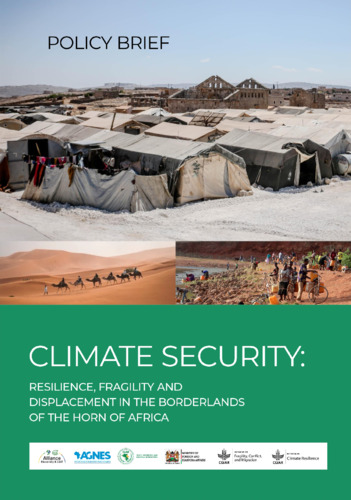Climate security: Resilience, fragility and displacement in the borderlands of the Horn of Africa
POLICY KEY MESSAGE
1. The interplay between climate change, insecurity, and conflict in Eastern Africa depends on local dynamic interactions between exposure to climatic hazards, vulnerability, and coping capacity.
2. Key climate security pathways in the borderlands are threats to food and water security; climate-induced mobility; historical grievances and cultural practices; and governance and fragility.
3. Consequences of climate security, and the measures governments take to respond to them, are often through sub-national and national policy approaches– but they also transcend national boundaries, and call for a multilateral response that current approaches to climate change adaptation do not always provide.
4. To reduce the risks of maladaptation in the Eastern Africa, there is need:
(a) To integrate planning for the borderlands by member states to provide a comprehensive framework that manages climate change, conflict, and displacement impacts, incorporating them into national and sub-national policies to promote sustainable development and livelihoods.
(b) For a system approaches and cross—disciplinary/boundary thinking to understand the complex dynamics that contribute to vulnerability.
(c) For climate security-sensitive interventions that emphasize cooperation and collective action to help address structural sources of vulnerability and conflict, reducing the likelihood of maladaptive responses.
5. There is a glaring need to strengthen coordination and build capacities of all member states in the Eastern Africa to design and implement policies that promote inter-linkages between the climate, development, and peace nexus to promote stability and peace outcomes and accelerate sustainable development.
6. There is need to develop and embed Climate Finance Diplomacy (CFD) facilities and build capacities of all member states in the HoA in order to competitively attract and unlock new climate change mitigation finances to address climate risks to peace and security.
7. Emergence of pest due to climate change, such as desert locust, calls for harmonized pest management protocols which would include transboundary area surveillance and control, harmonized pesticide and biopesticide standards, and early warning information generation and sharing.

